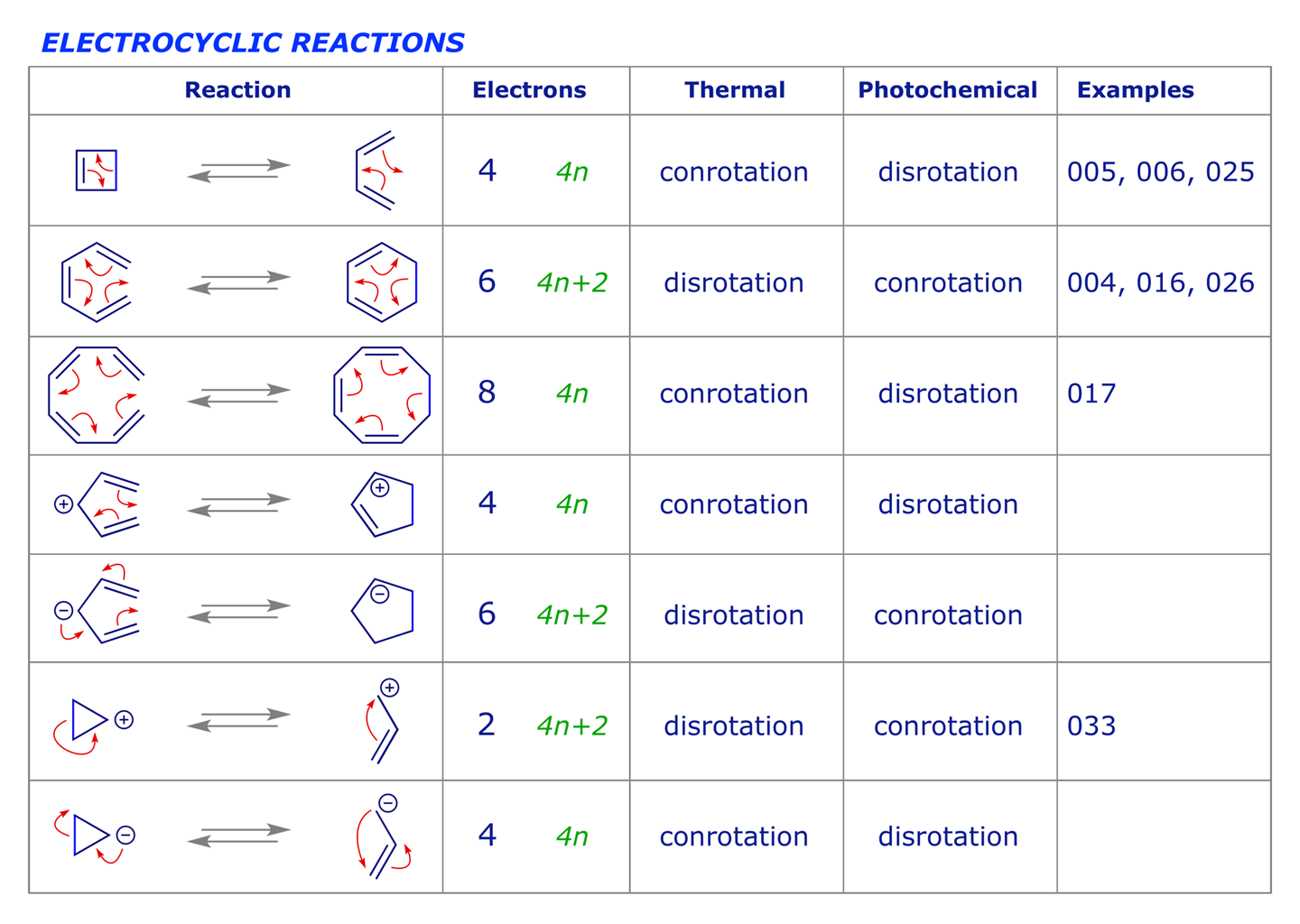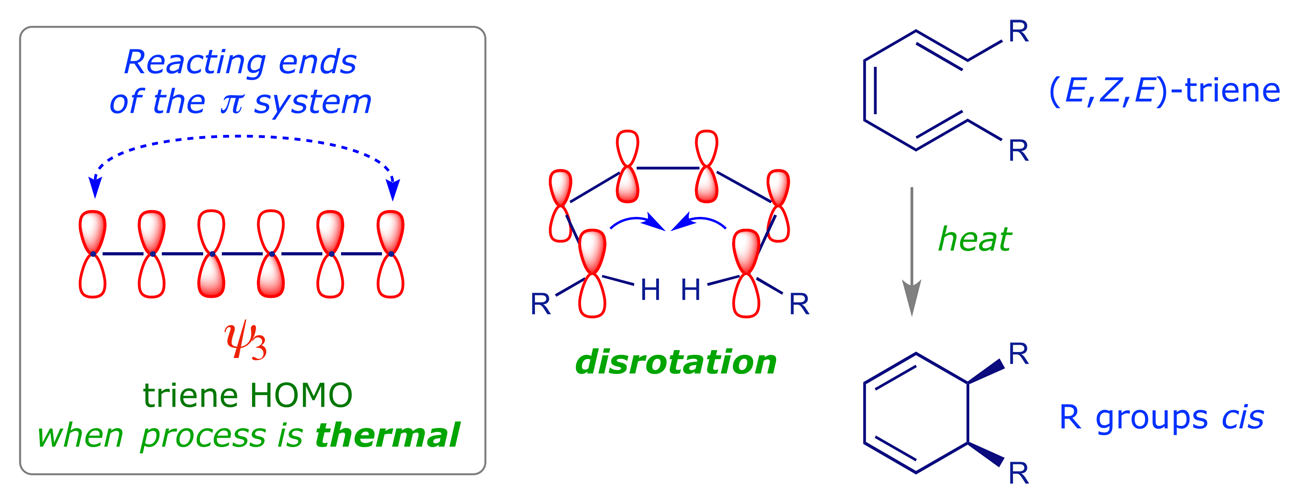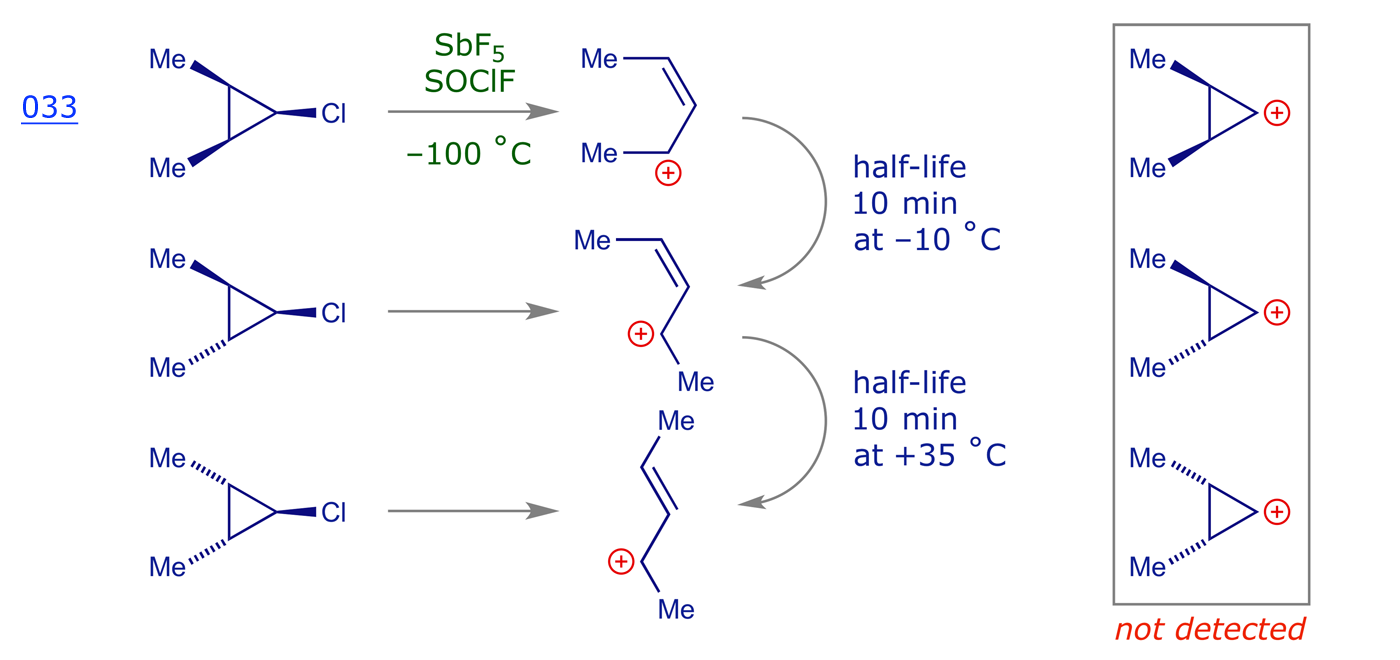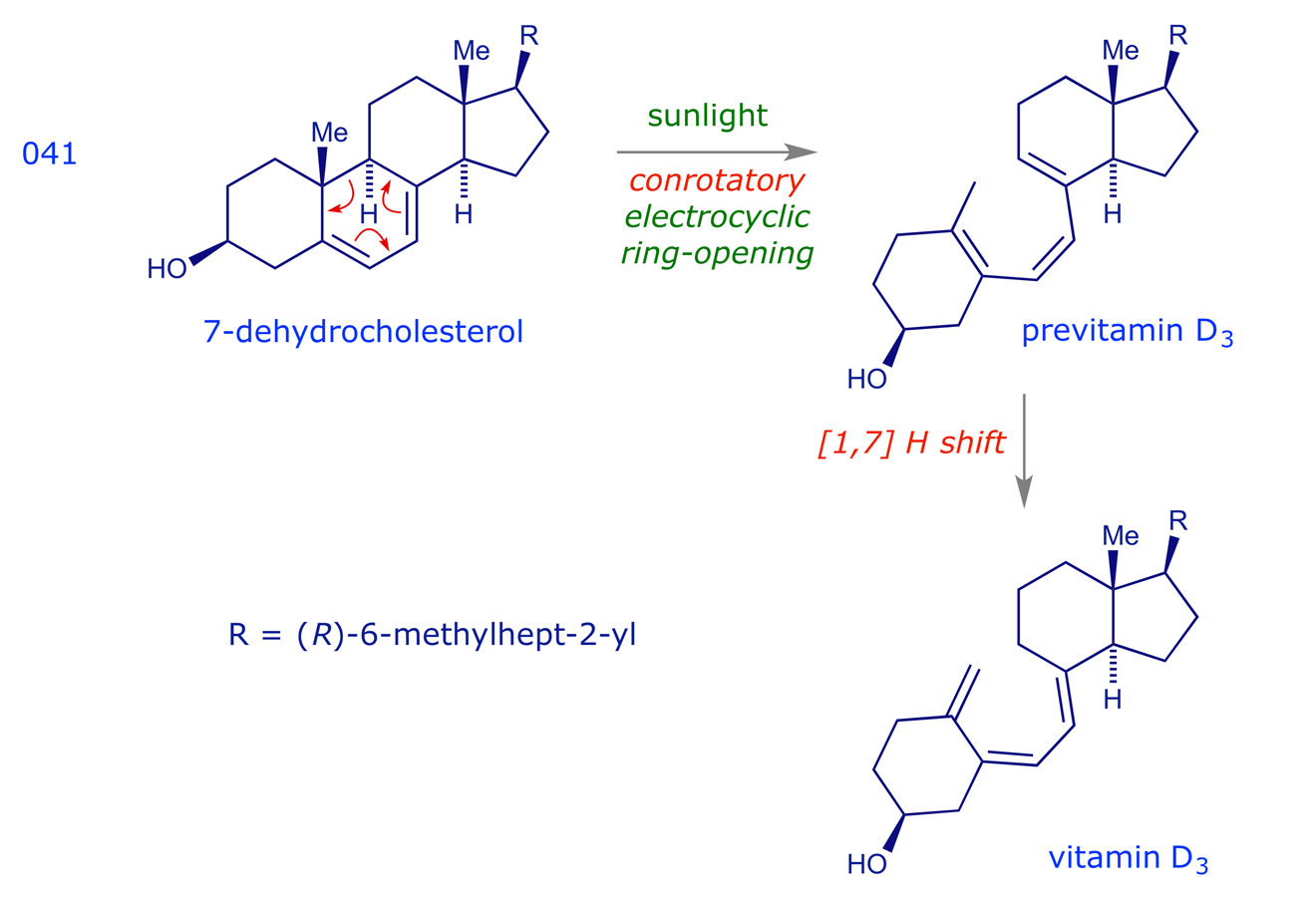Electrocyclic Reactions
- Selection rules for electrocyclic ring-opening and ring-closure
- Valence tautomerisation through electrocyclic reactions
- Sigmatropic rearrangements
- Thermal [1,5] and [1,7] sigmatropic hydrogen shifts
1 Selection rules for electrocyclic ring-opening and ring-closure
The Woodward-Hoffmann analysis illustrated previously provided the selection rules shown below (Table 5.1) for electrocyclic ring-opening. The electron count (4n+2 or 4n) determines the orbital symmetry properties and hence the stereochemistry of ring-opening. Electrocyclic reactions of ions are common and ring-closure may be the thermodynamically favoured result.

Various 6π systems were studied when this theory emerged. The 6π thermal cyclisation proceeds by disrotation as predicted, with ring closure being the energetically favoured process.

Some examples of orbital-controlled stereoselective electrocyclic ring opening and closure are shown below. The reactions in 033 are cyclopropyl-allyl rearrangements. In principle the results could be interpreted as proceeding via cyclopropyl cations, formed by loss of chloride, but no evidence for the involvement of such cations was found. Nevertheless, the results confirm that the process is stereospecific: the substituents on the same side of the cyclopropane ring as the leaving group can be expected to disrotate towards one another.



The operation of only one of the two thermally allowed disrotation modes is consistent with the concerted SN2-like displacement of the leaving group Cl− by the electron density from the breaking σ bond (Figure 5.2). The electron density develops on the correct face of the cyclopropane ring, i.e. away from the chlorine atom, only if the X groups disrotate 'inwards' and the Y groups disrotate 'outwards' (using molecular models helps to visualise this).

2 Valence tautomerisation through electrocyclic reactions
Small rings tend to undergo electrocyclic ring opening because of the accompanying release of strain, but larger π systems often exist in a genuine equilibrium, referred to as valence tautomerisation. Some of these processes can be observed spectroscopically; for others the reaction has been revealed by isotopic labelling experiments. Ring strain can be a useful predictor for ring-opening and ring-closure reactions; for example, a trans double bond cannot be contained within a 7-membered or smaller ring, so any conrotation or disrotation that would produce such a bond can be expected to fail (or else be extremely difficult). For example, the cyclobutene ring in 034 requires forcing conditions to induce thermal conrotation, because this generates a trans double bond in an 8-membered ring (try writing out the mechanism of this process).

![Valence tautomerisation of bicyclo[4.2.0]octa-2,7-diene via thermal electrocyclic ring-opening and ring-closure](images_PR/5024.png)
![Formation and valence tautomerisation of 7,7-dicyanobicyclo[4.1.0]hepta-2,4-diene](images_PR/5027.png)
![Valence tautomerisation of bicyclo[4.1.0]hepta-2,4-diene gives cyclohepta-1,3,5-triene](images_PR/5030.png)
![Valence tautomeric equilibrium between 7-oxabicyclo[4.1.0]hepta-2,4-diene and oxepine](images_PR/5033.png)
![Valence tautomeric equilibration of cyclooctatetraene and bicyclo[4.2.0]octa-2,4,7-triene](images_PR/5036.png)
The photochemical version of this triene reaction is important in vitamin D formation in humans (lack of D3 causes rickets). Previtamin D3 is then converted into vitamin D3 by another pericyclic reaction, this time a [1,7] sigmatropic H shift. This class of pericyclic process is analysed in the next section.

3 Sigmatropic rearrangements
Sigmatropic rearrangements are pericyclic reactions in which a σ bond appears to move across a conjugated system to a new site. If the name '[n,m] sigmatropic rearrangement' starts with '1', then one end of the bond that moves remains attached to its original atom — the n refers to the fact that the other end of the bond migrates across n atoms. To begin with, we will analyse this type of reaction in the context of migrating C–H bonds (hydrogen shifts).
![Diagrammatic representation of an [n,m] sigmatropic rearrangement](images_PR/5042.png)
4 Thermal [1,5] and [1,7] sigmatropic hydrogen shifts
The example 020 below illustrates some of the features and nomenclature of sigmatropic shifts. Notice that if we label the p orbitals of the π system and the σ orbital of the C–H bond as either a ('above') or b ('below'), the C–H bond starts above and ends up above. It migrates across the upper face of the π system — this is described as a suprafacial rearrangement.
![Thermal suprafacial [1,5] sigmatropic H shift in 6-methylocta-2E,4Z-diene](images_PR/5045.png)
If we add one more C=C π bond (two more p electrons), the observed thermal reaction is antarafacial — the C–H starts 'above' but ends up 'below' and the H appears to migrate from one face of the π system to the other. This can only happen when the molecular structure is able to adopt a conformation that allows such a rearrangement.
![Thermal antarafacial [1,7] sigmatropic H shift in (4Z,6Z)-2,8-dimethylnona-2,4,6-triene](images_PR/5048.png)
